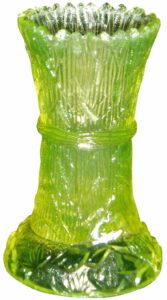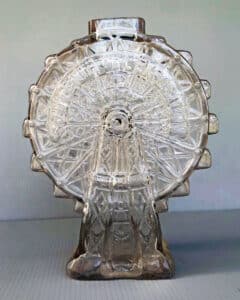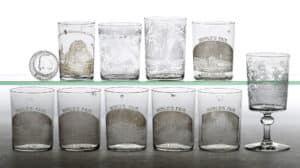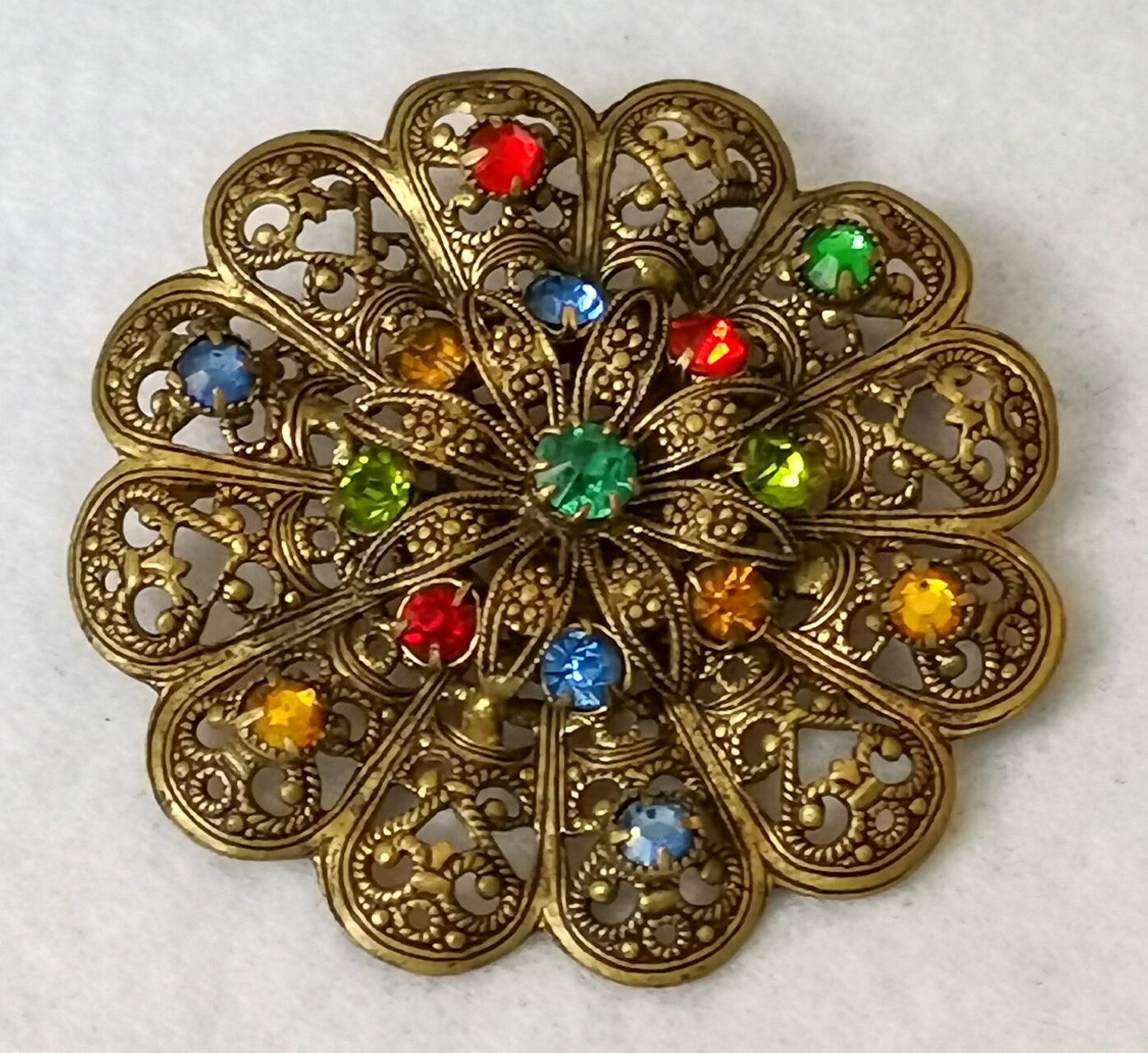Around the World’s Fair with Glass
World’s Fairs have always been showcases of innovation, industry, and culture. Early World’s Fairs particularly offered opportunities to highlight new inventions and advancements in the technologies of the day. Glassmaking was one of the industries that was ever-changing at the time. Let’s take a peek at why so many early World’s Fairs included glass souvenirs and why many are still collected today.
The Rise of Glass as a World’s Fair Souvenir

Glass became a popular material for World Fair souvenirs in the late 19th and early 20th centuries, coinciding with advancements in production techniques. For example, the 1876 Centennial Exhibition in Philadelphia featured pieces by Gillinder and Sons. The company constructed working glass factories on-site. This allowed visitors to witness the glassmaking process firsthand and purchase commemorative items, creating a direct connection between the fair experience and the souvenir.
Free Carnival Glass as Novelty Prizes
If, as I have, you have ever played a carnival game and won a stuffed animal, you might have trouble envisioning this. Still, many of those prizes were pieces of glassware. It all started when the Louis Comfort Tiffany’s favrile glass was exhibited at the Paris Exhibition in 1900. The public fell in love with a specific iridescent vase that was on display.
The Fenton glass company wanted a piece of the favrile glass pie. By 1908, the company began producing a much less expensive version of iridescent glass, but how would they market it? The answer was to take it to carnivals and give pieces away as prizes. The hope was that the prize winners would go on to buy other pieces to complete the sets. It worked, and carnival glass became quite popular.
Glass “Prizes” at Actual World’s Fairs
Glass prizes at actual World’s Fairs were a bit different. Most of the time, novelty glass pieces were not given away for free in World’s Fair settings; they were sold at discounted prices as souvenirs. Often, they consisted of practical items like plates, toothpick holders, or bowls. The point was to promote the fairs and the glass companies by getting visitors to take home practical glass items they would continue to use in their homes.

Glass companies also used World’s Fairs as a platform to market their products and promote their brands. By distributing inexpensive glass souvenirs, they could reach a broad audience and create lasting associations between their company names and quality glassware. For instance, the Pittsburgh Plate Glass Company showcased its products in model rooms and homes at the 1939 New York World’s Fair, aiming to demonstrate how glass could modernize homes.
Types of Glass as World’s Fair Souvenirs
Many glass giveaways were specifically designed to commemorate the fair. These included items like the glass slipper from the 1876 Centennial Exhibition, which was pressed with the inscription “GILLINDER & SONS / CENTENNIAL EXHIBITION.” Plates and other items were also often given away or, more likely, sold inexpensively as reminders of the fairs. Typically, they included images of fair attractions.
Paperweights, figurines, and other decorative glass items were common giveaways. These often featured imagery related to the fair or its host city. For example, paperweights from the 1904 St. Louis World Fair depicted fair buildings and attractions.
Collecting World’s Fair Glass Today

Many World’s Fair glass giveaways have become highly sought-after collectibles.
They are now considered links to significant historical events like the Great Exhibition of 1851 in London, England, or the 1939 New York World’s Fair. The souvenirs offer insights into the technological advancements, cultural values, and aesthetic preferences of their time.
Another important factor in collecting World’s Fair giveaway glass pieces is that many were produced in limited quantities or for a specific event, making them rare. As any collector knows, rarity often makes an item more desirable.
The high level of skill and artistry demonstrated in many World’s Fair glass pieces, particularly those from the American “Brilliant Period,” is also a contributing factor in the popularity of the pieces. They were created with care to show off the skills and innovations of each company. They may have been given away or sold at a low cost at the time.
Still, there was nothing cheap about the design and construction of these diverse and sought-after collectibles.

Jessica Kosinski has been a freelance researcher and writer since 2001. She developed a passion for pre-1990s television and films as a child and she has never grown out of it. Recently, she turned that passion into a retro TV and film blog. Follow along with her at https://medium.com/@jkos_writing, as she dives deep into the characters, actors, quirks, and trivia that brought us some of the greatest films and shows in TV history and also discusses some of the more obscure films and shows most of us may have forgotten.





